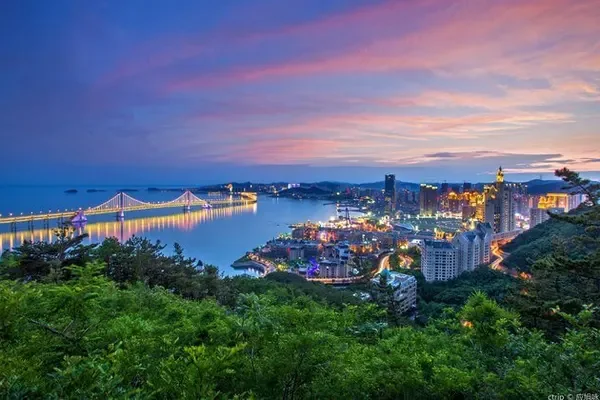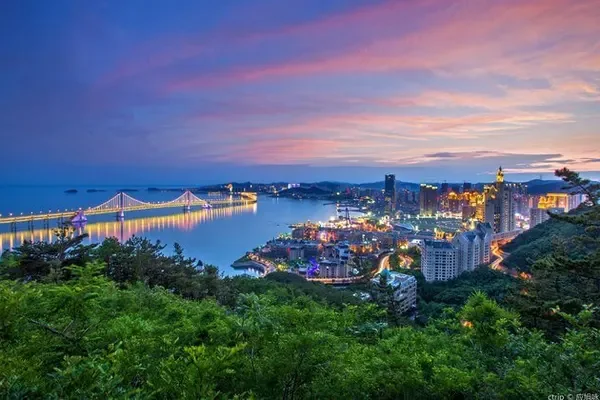Pay attention to the WeChat official account of "Traditional and Simple Meteorology", there will be more exciting
·
1.318 The Sichuan-Tibet line is in winter from November to March next year. Due to the high altitude and cold weather, some road sections have snowfall and the road surface is icy, so it is not suitable for self-driving travel. ·
2. The rainy season is from late June to August. Although the scenery is good at this time, there are many natural disasters such as landslides and mudslides, and the roads are dangerous. It is not recommended to travel by car. · ·
3. The best time for self-driving travel is from April to early June and September to mid-October. Not only can you enjoy the charming scenery in spring and autumn, the climate is also suitable, and the safety on the road is relatively high. high.
· ·
·
Tibet, a fascinating pure land on earth, has devout beliefs, towering mountains, mysterious Potala Palace, pure blue sky and white clouds, all of which bring people a strong shock and move in their hearts.
Sichuan-Tibet Line 318 National Highway from Chengdu to Lhasa, with a total length of 2,140 kilometers, is selected by National Geographic as the most beautiful landscape avenue in China. Tens of thousands of travel enthusiasts choose this route to go to Tibet. "From the moment you set off, you will start to interpret the beauty that will make you unforgettable all your life. It is the blissful place for travel adventure lovers and photographers."
The natural scenery along the way bursts out countless sighs in the incredible. Blue sky, white clouds, forests, green hills, grasslands, wildflowers, flocks of sheep, woods, lakes, mountains, canyons, glaciers, snow-capped mountains... You can basically see the scenery that one can imagine along the way.
1. Seasons that are not suitable for self-driving travel
The Chengdu-Lhasa section of National Highway 318 on the Sichuan-Tibet Line has experienced visual and sensory shocks from basins to plateaus, from hills to mountains, from rainforests to grasslands, and from deserts to forests. Beauty and magnificence coexist, elegance and boldness coexist. Walking on the Sichuan-Tibet line, it often rains, snows and hails, meeting the four seasons. The temperature difference between morning and evening, the lack of oxygen at high altitude, and mudslides and landslides that cannot be ignored.
Snowfall and ice accumulation from November to March
Since November on the Sichuan-Tibet line, the monthly average temperature in high-altitude areas such as Litang and Zuogong has been close to 0 degrees. The average temperature reaches the lowest in the year in January and lasts until March next year. During this period, snowfall occurs along the route. And ice accumulation, coupled with high-altitude and low-temperature weather, will bring great danger, and it is not suitable for self-driving travel (except for explorers).
Even in summer, the extreme minimum temperature in high-altitude areas is still close to 0 degrees, and the extreme minimum temperature in a few low-altitude areas such as Chengdu and Ya'an is above 10 degrees. In summer, when vehicles are driving on the Sichuan-Tibet line, don’t be surprised by the blue sky with white snowflakes.
July to August is the rainy season
July and August are the rainy season on the Sichuan-Tibet line. Due to the increase in rainfall and the number of days of precipitation, natural disasters such as landslides, mudslides, and landslides occur from time to time. The road conditions are also relatively bad, and the danger along the way will also increase greatly. It rains on an average of about 20 days a month. Friends who travel by car must plan their itinerary in advance.
The average monthly precipitation in July and August is about 20 days. Even Chengdu, which has relatively few precipitation days, has an average monthly precipitation of 17.6 days in July and 15.8 days in August.
In July and August, the average monthly precipitation in various places exceeded 100 millimeters, and the average monthly precipitation in Chengdu and Ya'an exceeded 300 millimeters.
In fact, strictly speaking, in late June, the Sichuan-Tibet line has already entered the rainy season. In late June, the average number of days of precipitation in various places has reached 6-8 days, and the precipitation has been around 50 mm.
The Sichuan-Tibet line has beautiful scenery from July to August, with lush greenery along the way, undulating mountains and snow-capped peaks. If you really want to travel by car in these two months, you must not rush to catch up with the schedule. You must know the weather conditions in advance and pay attention to the dangers brought by natural disasters such as mudslides.
2. The season suitable for self-driving travel
Along the way, you will see the vast Maoya grassland in Litang, where cattle and sheep are scattered, just like a natural picture. Cross the pass of Haizi Mountain and see the majestic canyon; cross the Lao Mountain, cross the Lancang River, cross the Jueba Mountain, and cross the Dongda Mountain, the highest mountain pass on the Sichuan-Tibet Line, and you will suddenly find that the true meaning of life is as it is, and the beauty of heaven lies in it. in front of you.
Mountain flowers are in full bloom from April to June
In April, the Rhododendrons all over the mountain on the 318 Sichuan-Tibet Line began to bloom one after another. The monthly average temperature is between 5 and 15 degrees, which is a good time for viewing flowers and scenery. From May to June, the temperature gradually rises, and the average temperature has reached between 10 and 20 degrees. The greenery all over the world will bring you the most beautiful feeling, and it is also the most beautiful season for glaciers and snow mountains.
In April, the extreme maximum temperature in low-altitude areas such as Chengdu and Ya'an reached 30 degrees, and in May-June in high-altitude areas such as Litang and Zuogong, the extreme maximum temperature was between 20-25 degrees. The temperature varies greatly along the route.
From April to June, the average monthly precipitation days of the Sichuan-Tibet line are mostly less than 15 days, but a few areas such as Kangding, Bomi, and Nyingchi have relatively abundant precipitation. The average monthly precipitation days in May is about 20 days, and the average monthly precipitation days in June is 23 days. days or so. Friends passing by this section need to pay more attention.
From September to October, the autumn colors are charming
September and October on the 318 Sichuan-Tibet Line are the best seasons in terms of scenery and climate. The average temperature in September is between 10 and 20 degrees, and in October is between 5 and 17 degrees. The world is colorful, and the forests are full of dyes, experiencing the world of fairy tales.
Walking on the plateau, the altitude is high and the sunshine is strong, and the temperature difference between morning and evening is large. The temperature difference along the line is basically about 10-16 degrees, and the body feeling is more obvious. Remember to bring some thicker clothes before you go.
Walking on the 318 Sichuan-Tibet Line, while admiring the beautiful scenery, you can let go of your mood and travel under the most suitable weather conditions, which will give you more peace of mind.
3. Suggestions on itinerary
On the 318 Sichuan-Tibet line, there are clumps and patches of flowers and green grass all over the world, mountains and peaks, and dazzling colors, which will be deeply imprinted in the mind.
In the small town of Zhuka, look at the winding path, watch the desolate mountains around, and experience the passing of time. Arrive in Bangda, see the vast wilderness, climb over the biggest natural danger of Hengduan Mountain - Yela Mountain, and experience the charm of the seventy-two turns of the Nu River winding all the way downhill.
Ranwu Lake, like the sky condensed into a piece of blue, is quiet, and you can still see her beauty when you close your eyes. Midui Glacier, touching the 700-meter-high waterfall at zero distance, is it magnificent? Beautiful? Climb up Sejila Mountain, look at the auspicious clouds hanging high, watch the sunrise, the sea of clouds, and appreciate the majestic appearance of Namjagbarwa Peak.
The Yarlung Zangbo River runs around the mountains, the largest canyon in the world is extremely majestic, the stamina of Namjagbarwa and the magnificence of Yarlung Zangbo complement each other, the waves are surging down, and the mountains and waters are beautifully integrated.
You must go to Tibet once in your life. Grab the tail of youth, don't hesitate, rush out bravely, when you come back, you will still be a young man, and you will be full of happiness.
318 Sichuan-Tibet line recommended itinerary (10 days)
Day1: Chengdu - Ya'an - Luding - Moxi Ancient Town
Luding Bridge - Red Tourist Attraction
Day2: Hailuogou - Kangding - Xinduqiao Hailuogou - Magnificent Glacier
Zheduo Mountain - the first pass of Kangba
Xindu Bridge - "Photography Paradise" on the Sichuan-Tibet Line
Day3: Xindu Bridge - Yajiang - Litang - Daocheng Yading
Maoya Prairie - one of the six most beautiful prairie in China
Rabbit Mountain—a geological wonder of the ancient ice cap
Haizi Mountain - the wild and desolate mountain of thousands of lakes
18 Bends on Tianlu—Shocking Curves and Detours
Day4: Daocheng Yading
Five-color Sea, Milk Sea, Pearl Sea, Sanshen Mountain, Chonggu Temple
Jinsha River Bridge - Sichuan-Tibet Divide Line
Day5: Daocheng - Litang - Sister Lake - Batang - Jinsha River - Mangkang
Sisters Lake—Tears from the Gods
Day6: Mangkang - Zuogong - Bangda - Basu
Bangda Grassland——The Cloud-to-Sky Road in Eastern Tibet
72 Turns of the Nujiang River——One of the Top Ten Precipitous Mountain Roads in China
Dongda Mountain - the highest mountain pass on the Sichuan-Tibet line
Day7: Basu - Ranwu Lake - Midui Glacier - Laigu Glacier - Bomi
Ranwu Lake - Tears from Heaven
Midui Glacier - the most accessible glacier
Laigu Glacier - one of the three largest glaciers in the world
Palong Zangbo River - one of the main tributaries of the Yarlung Zangbo River
Day8: Bomi - Tongmai - Lulang Linhai - Sejila Mountain - Nyingchi
Tongmai Bridge - a natural danger on the Sichuan-Tibet line
Lulang Linhai - that touch of moving green
Jila Pass - the best angle to view Namjagbarwa
Day9: Linzhi - Basongcuo - Mila Mountain - Lhasa
Basongcuo - a wonderland forgotten by time
Day10: Lhasa - Yamdrok Yongcuo - Lhasa
Lhasa - City of Sunlight
Yamdrok Yongcuo——one of the three holy lakes in Tibet
--------------THE END-------------
Pay attention to the WeChat official account of "Traditional and Simple Meteorology", there will be more exciting
![[318 Sichuan-Tibet Line] The most beautiful Chengdu-Lhasa section, the best self-driving travel time collection](https://www.anyonetrip.com/uploads/202412/05/65fadc4e76c4ddc8.webp)

